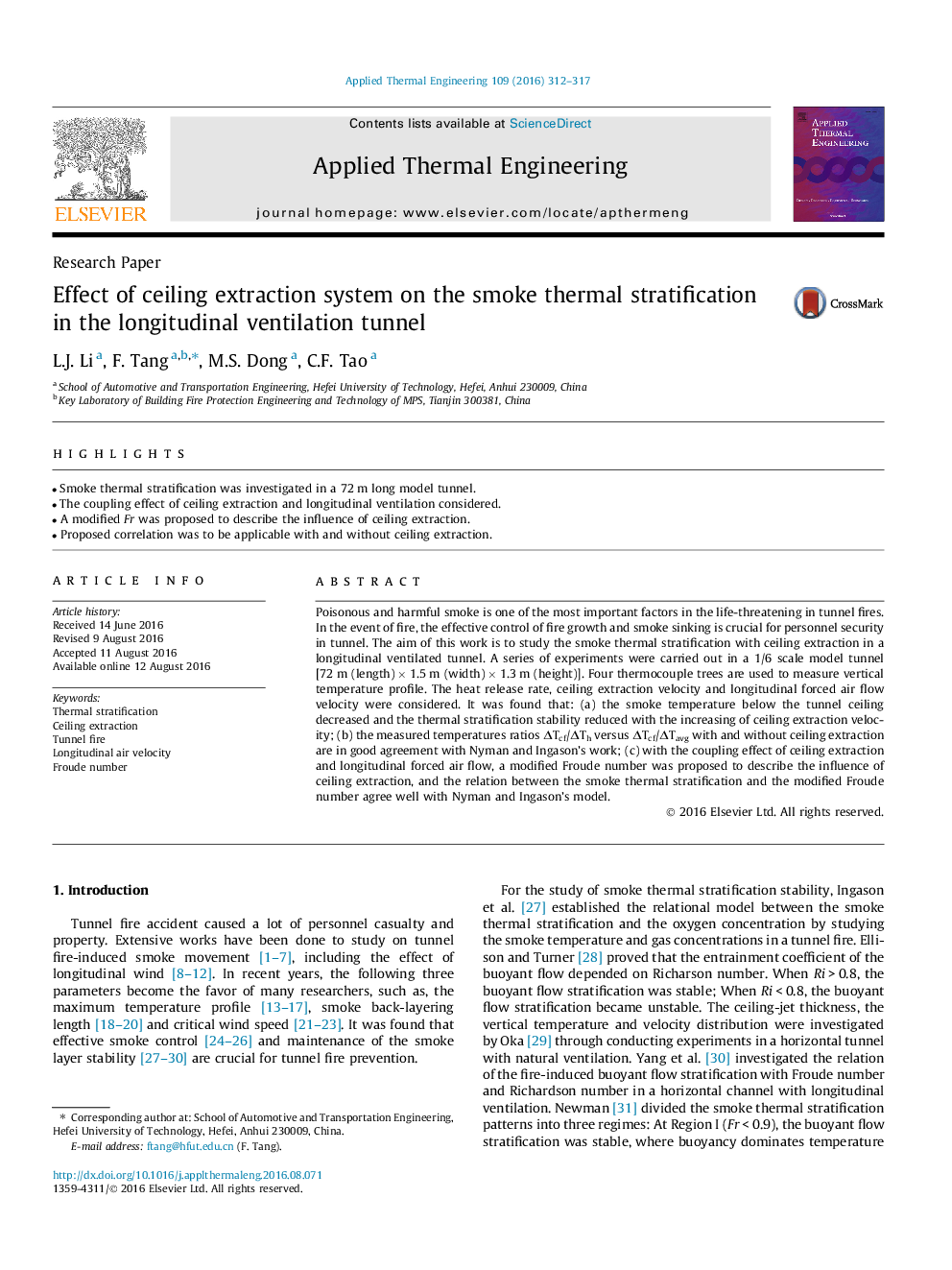| Article ID | Journal | Published Year | Pages | File Type |
|---|---|---|---|---|
| 644467 | Applied Thermal Engineering | 2016 | 6 Pages |
•Smoke thermal stratification was investigated in a 72 m long model tunnel.•The coupling effect of ceiling extraction and longitudinal ventilation considered.•A modified Fr was proposed to describe the influence of ceiling extraction.•Proposed correlation was to be applicable with and without ceiling extraction.
Poisonous and harmful smoke is one of the most important factors in the life-threatening in tunnel fires. In the event of fire, the effective control of fire growth and smoke sinking is crucial for personnel security in tunnel. The aim of this work is to study the smoke thermal stratification with ceiling extraction in a longitudinal ventilated tunnel. A series of experiments were carried out in a 1/6 scale model tunnel [72 m (length) × 1.5 m (width) × 1.3 m (height)]. Four thermocouple trees are used to measure vertical temperature profile. The heat release rate, ceiling extraction velocity and longitudinal forced air flow velocity were considered. It was found that: (a) the smoke temperature below the tunnel ceiling decreased and the thermal stratification stability reduced with the increasing of ceiling extraction velocity; (b) the measured temperatures ratios ΔTcf/ΔTh versus ΔTcf/ΔTavg with and without ceiling extraction are in good agreement with Nyman and Ingason’s work; (c) with the coupling effect of ceiling extraction and longitudinal forced air flow, a modified Froude number was proposed to describe the influence of ceiling extraction, and the relation between the smoke thermal stratification and the modified Froude number agree well with Nyman and Ingason’s model.
